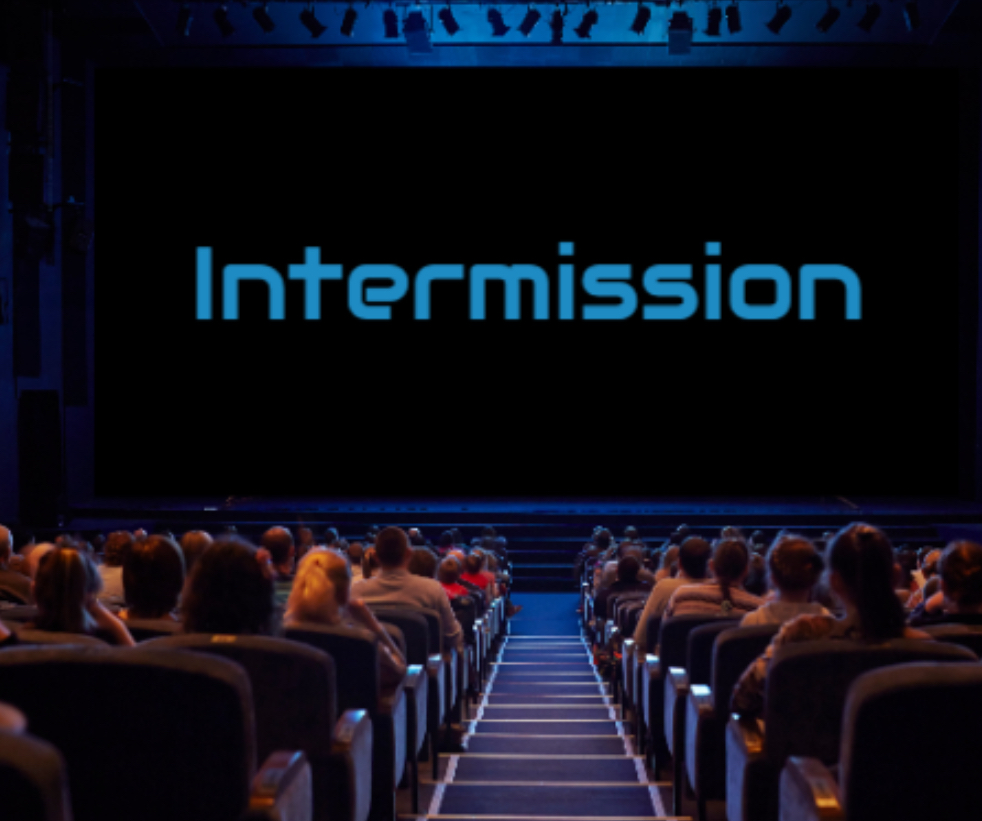There was a time when going to the movies wasn’t just about watching a film—it was an event. In the analog days of yesteryear, many theatrical films featured intermissions, giving audiences a much-needed 10 to 15-minute break to stretch their legs, grab refreshments, and discuss the story so far. This now-rare practice was once a staple in cinema, especially for epic-length films, creating an immersive and social movie-going experience that today’s digital-age audiences might find intriguing.
The History of Movie Intermissions
The concept of an intermission in entertainment isn’t unique to cinema. It has its roots in theater and opera, where lengthy performances necessitated a pause to allow both performers and audiences to refresh. As films grew in length and complexity, intermissions naturally found their way into early cinema, particularly during Hollywood’s Golden Age in the mid-20th century.
During the 1950s and 1960s, it was common for blockbuster films, especially those with grand storytelling and epic runtimes, to include an intermission. Classic films such as “Gone with the Wind” (1939), “Lawrence of Arabia” (1962), and “Ben-Hur” (1959) are notable examples that provided audiences with a pause, often accompanied by a musical overture or entr’acte to set the tone for the second half.
The primary purpose of these intermissions was practical—longer films required multiple reels of physical film stock, and projectionists needed time to switch them. However, they also served a social function, enhancing the audience’s engagement by giving them time to process what they had seen and anticipate what was to come.
Why Intermissions Faded Away
The gradual decline of intermissions can be attributed to several factors, including advancements in technology and changes in audience expectations. Some of the key reasons include:
Technological Advancements:
•With the advent of continuous reel projection and later, digital cinema, the technical need for intermissions diminished. Projectionists no longer had to switch reels, making it easier to present films without interruption.
Audience Preferences:
•As society became more fast-paced, moviegoers preferred uninterrupted viewing experiences. Studios and theaters responded to this shift by emphasizing seamless storytelling over the more traditional theatrical experience.
Economic Considerations:
•Movie theaters make significant revenue from concessions, and while intermissions provided an opportunity for sales, they also extended the overall runtime of a screening. This limited the number of showings per day, leading to a shift away from scheduled breaks.
Changing Film Structures:
•Modern films are often paced with a three-act structure designed to maintain engagement without pauses, making intermissions seem unnecessary in today’s cinema landscape.
By the 1980s, the concept of an intermission in mainstream films had nearly disappeared, with only occasional appearances in special re-releases or exceptionally long films.
Modern-Day Exceptions and Trends
Although rare, intermissions have made occasional comebacks in modern cinema. Certain directors and filmmakers recognize the value of a well-timed break, particularly for movies with extended runtimes. Some notable examples include:
•“Gandhi” (1982): Director Richard Attenborough retained an intermission in its original theatrical release due to the film’s epic scale.
•“Titanic” (1997): In select international markets, James Cameron’s blockbuster featured a brief intermission to accommodate longer screenings.
•“The Hateful Eight” (2015): Quentin Tarantino, known for his appreciation of old-school filmmaking, included an intermission in the special 70mm roadshow edition of the film.
•“RRR” (2022): The Indian blockbuster embraced the intermission tradition, as it remains a common practice in Bollywood and Tollywood films.
Interestingly, international markets such as India and the Middle East continue to embrace intermissions, often as a standard feature, particularly for films exceeding two and a half hours. This cultural preference allows audiences to enjoy cinema as a social event, reinforcing the idea that movie-going is more than just sitting in front of a screen.
The Case for Bringing Back Intermissions
With recent trends showing longer runtimes for major blockbusters—films like Avengers: Endgame (2019) and The Batman (2022) running over three hours—some audiences are advocating for the return of intermissions. Proponents argue that:
Comfort Matters:
Sitting through a three-hour film without a break can be physically uncomfortable, leading to decreased enjoyment.
Enhanced Engagement:
A break can help audiences better absorb complex narratives and return to the film with renewed focus.
Increased Revenue:
Theater owners might see higher concession sales if intermissions were reintroduced strategically.
Nostalgia Factor:
For movie lovers, an intermission could enhance the overall experience, bringing back the charm of classic cinema.
Challenges of Reintroducing Intermissions
Despite the potential benefits, reintroducing intermissions in modern mainstream cinema faces hurdles:
•Filmmaker Resistance: Directors often design films with a continuous narrative flow in mind, and adding a break might disrupt their artistic vision.
•Economic Concerns: As previously mentioned, theaters prioritize turnover, and a longer screening duration could reduce the number of showings per day.
•Audience Adaptation: Today’s audiences are accustomed to continuous storytelling, and some might view intermissions as an unnecessary interruption.
Intermissions in Streaming and Home Viewing
Interestingly, while theatrical intermissions have largely disappeared, the concept is thriving in the streaming era. Platforms such as Netflix and Disney+ allow viewers to take breaks at their own convenience, effectively mimicking the intermission experience. Some streaming services even introduce auto-pauses for long movies or suggest ideal stopping points.
Additionally, films and series released in parts, such as Zack Snyder’s Justice League (2021), divided into chapters, reflect a growing trend toward embracing structured viewing breaks.
Final Thoughts
While the golden age of movie intermissions may be a thing of the past, their value and charm remain undeniable. Whether it’s through special screenings of classic films or adaptations in modern digital media, the idea of a structured break in entertainment continues to evolve. As blockbusters grow longer and audiences seek more comfortable viewing experiences, perhaps the nostalgic intermission could find its way back into mainstream cinema—offering not just a pause, but an opportunity to enhance the magic of the movie-going experience.
Until then, the memory of those analog days—where a 15-minute break meant stretching your legs, chatting with friends, and grabbing a snack—remains a cherished part of cinematic history.
No comments yet.








